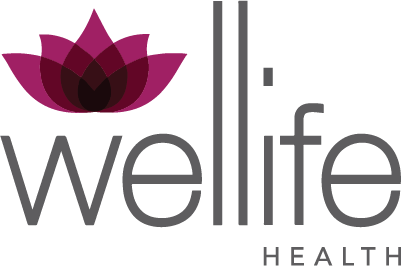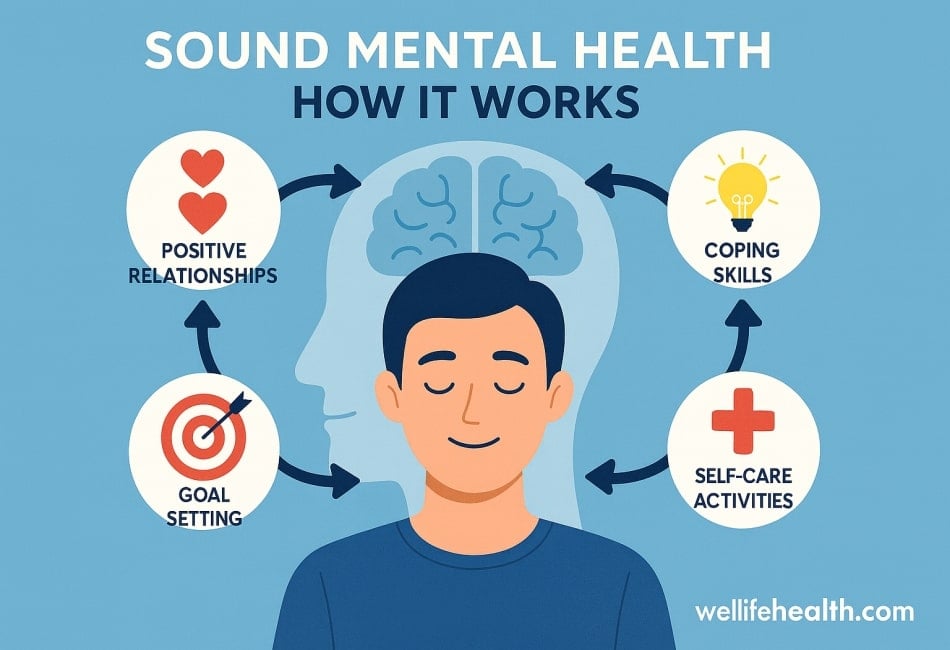In this fast-paced world, mental health issues are becoming more and more common. Stress and anxiety, depression, and emotional exhaustion – they affect millions of people around the world. Even as traditional therapy and medication are both essential, holistic treatments that naturally heal sound mental health are what cause an increasing number of people to believe. One such incredible practice that is being widely accepted these days is sound healing, which is the process of healing people using vibrating frequencies to bring the body and mind into a perfect balance.
In this article, you will learn about the principles of sound healing, its historic roots, how it works, and why it’s becoming an advanced tool for the treatment of mental health.
What is Sound Healing?

Sound healing is a type of holistic therapy that uses sound frequencies to enhance physical, emotional, and mental well-being. It’s based on the concept that all things in the universe vibrate, including the human body. If those frequencies become out of tune — as a result of stress, sickness, or negative emotions — dis-ease can occur.
Sound healing seeks to return these vibrations to their natural harmonious state through the use of tools like singing bowls, gongs, drums, tuning forks, or simply the human voice. The outcome is that your body goes into a deeply relaxed state in which it can regenerate your own body and your mind will rid itself of accumulated stress.
When it comes to mental health, sound healing is especially powerful at calming the nervous system, silencing the mind, and providing emotional clarity. For many participants, it involves entering a “meditative state,” in which those concerns fall away and what comes is inner peace.
Origins and Historical Background
The use of sound as a healing force is nothing new — it’s been around for thousands of years and is practiced globally.
- Ancient Egypt: Temples were designed with sound in mind, to amplify chants and tones thought to harmonize the spirit.
- Greece: The philosopher Pythagoras developed a theory regarding the mathematical relationship of the body to music, which, he considered, is discord when the person is sick and concord when the person is well; and he called the concord “the music of the spheres.”
- India: Ayurveda promoted mantras and reciting as a means for mental and physical health in the Vedic traditions.
- China: Ancient Chinese medicine, which used sound in disease therapy in conjunction with the concept of flow of energy (qi) through the body.
- Indigenous Tribes: Native Americans have used drumming and chanting for thousands of years to induce a spiritual oneness and an altered state of consciousness in group rituals for healing, for emotional and physical healing.
Tibetan monks created singing bowls, which make harmonic vibrations for meditation and healing. From these traditions was built the foundation of what we consider sound healing today, which incorporates the ancient traditions with the cutting-edge research of today.
How Does Sound Healing Work?

The power behind sound healing is the impact it has on brain waves, nervous system activity, and the flow of energy within the body.
1. Brainwave Entrainment
Sound vibrations are key in assisting brainwaves to lower frequencies, from beta (normal waking consciousness), to alpha (relaxation), and theta (meditation), even delta (sleep). This adjustment decreases stress and clears the mind.
2. Nervous System Balance
Soft tones stimulate the parasympathetic nervous system — the “rest and digest” response — reducing the levels of stress hormones such as cortisol and inducing relaxation.
3. Cellular Resonance
Everything in the body vibrates, and sound waves can promote harmony and balance within the body’s cells. Sound therapy may even boost immune system function, some studies indicate.
4. Emotional Release
Humans generally get a lot from vibrations in that regard; it’s part of the reason people like massage so much. Many people leave claiming to feel lighter, calmer, and more emotionally open.
5. Energy Flow Alignment
Sound moves through the energy centers (chakras) in the body, helping the stagnant areas to change and balance to return.
Tools Used in Sound Healing

Sound healers employ almost any type of instrument, all of which create distinct vibrations. Most Popular Tools: These are the most popular tools:
- Tuning Forks – These are attuned to specific wavelengths, and can help with energy blocks or facilitate healing in different parts of the body.
- Singing Bowls (Crystal and Tibetan)- Prized for their full, remarkable sound, which makes them perfect for deep relaxation and meditation.
- Gongs – Their strong, complex waves envelop participants in sounds that frequently result in emotional release.
- Drumming – Drumming has a grounding effect. It can also be used to release stress and aid in connection with nature.
- Chimes & Bells – Ring in clarity and calm with light, going tones.
- Human Voice – By chanting, humming, or using mantras, you make direct use of your body’s own sound vibrations.
Alone or in sound baths, they provide participants with a constant flow of healing vibrations.
Techniques Used in Sound Healing

Sound healing sessions differ according to the practitioner and the goal. Common techniques include:
- Sound Baths – Group sessions where people lie down and have their minds blown by vibrations from bowls, gongs, and chimes.
- Gong Therapy – Powerful experiences with gongs to manipulate brainwave patterns and deepen meditation.
- Mantra Meditation – Reciting special healing sounds (like “Om”) to clear the mind and stabilise energy.
- Binaural Beats – listening to two individual tones of slightly different frequencies, which stimulates the brain with synchronization (encoding) of the brain stem between hemispheres.
- Personalized Sessions – Where one can address particular emotional or mental issues as such, practitioners might work with (forks or voice) on them.
Every technique is meant to lead the thoughts to a point of relaxation, allowing the body to heal itself naturally.
Who Can Benefit from Sound Healing?
Sound healing is simple and safe for most people, and it is a practice for everyone. Those who may benefit include:
- Anxiety and stress – Sound decreases the stress by lowering cortisol levels and summations, controlling the heart rate, and promoting peaceful, rhythmic breathing.
- Depression – Vibrations help raise mood and establish an emotional balance.
- Insomniacs – Relaxing sounds lead to more restorative and deeper sleep.
- Trauma victims – In sound therapy, safe spaces allow emotional blockages to be released.
- Students and professionals – Supports focus, creativity, and productivity.
- Seniors- Helps to relax, improve loneliness, and aid memory.
Of course, sound therapy isn’t a replacement for mental health care, but as a supplement, it can be powerful.
Getting Started with Sound Healing
For one thing, not even the most novice among us needs a Ph.D. to experiment with sound healing, nor expensive equipment. Here are a few ways to begin:
- Take a Sound Bath — Visit one of many wellness centers with sessions conducted by certified practitioners.
- Utilize the Power of Online Recordings – Websites like YouTube and even Spotify offer tracks for sound therapy, such as binaural beats or Tibetan Bowl recordings.
- Whether you can carry a tune or not, vocal humming or singing is a very effective way to balance energy levels and settle the mind.
- Get a Singing Bowl or Tuning Fork – Very good for personal practice at home.
- Pair with Meditation – Incorporate sound with mindfulness or breathing practices for even more powerful results.
The key is consistency. Just exposure to sound for 15–20 minutes a couple of times per week alone can greatly enhance mental clarity and decrease stress.
Teen Mental Health Treatment at Nexus Teen Academy

Adolescents confront the challenges of mental health that are specific to them, including academic stress, pressure from social media, and issues of identity. Sound therapy is part of treatment plans offered through Nexus Teen Academy, which takes an integrated approach to adolescent mental health.
Incorporating evidence-based practices like cognitive behavioral therapy and holistic approaches like sound healing, Nexus Teen Academy assists in:
- Develop emotional regulation skills
- Reduce stress and anxiety
- Improve focus and concentration
- Build resilience and self-esteem
Sound therapy provides a safe, non-invasive way for teens to experience calmness and reconnect with themselves during treatment.
Frequently Asked Questions (FAQs)
Q1. So, in simple terms, what is sound healing?
Sound healing employs the noise of instruments or the voice, which it uses to calm and soothe the mind, the body, and balance them.
Q2. How does sound healing benefit our mental health?
It lowers stress hormones, syncs brainwaves, and promotes a meditative state that facilitates emotional recovery and mental cunning.
Q3. Is sound healing scientifically supported?
Yes, studies demonstrate that sound therapy can reduce anxiety, help you sleep, and even lower blood pressure. Although we continue to study it, many people say they have seen major benefits.
Q4. Is sound healing something you can do at home?
Absolutely, for beginners, they can listen to a recording online, buy a singing bowl, or practice humming and chanting for daily relaxation.
Q5. Who should avoid sound healing?
People with certain seizure disorders that are triggered by sound or with other audio sensitivities should consult with a medical professional before listening.
Q6. How frequently should sound therapy be done?
Even doing it just 2–3 times per week can produce noticeable effects. A lot of folks adopt a routine of 15 minutes a day for the long haul.
Conclusion
Sound healing is not just the latest wellness craze — it’s an age-old tradition with deep cultural ties and modern science to support it. Tuning vibrations within the body and mind offers a course to sound mental health, emotional clarity, and resilience.
Whether you’re battling anxiety, looking for emotional balance, or working to cultivate greater well-being, sound healing is a powerful, accessible tool. Whether you’re interested in ancient mantras or modern binaural beats, the waves you ride to peace of mind with the Ancient Healing Frequencies are available to everyone.




